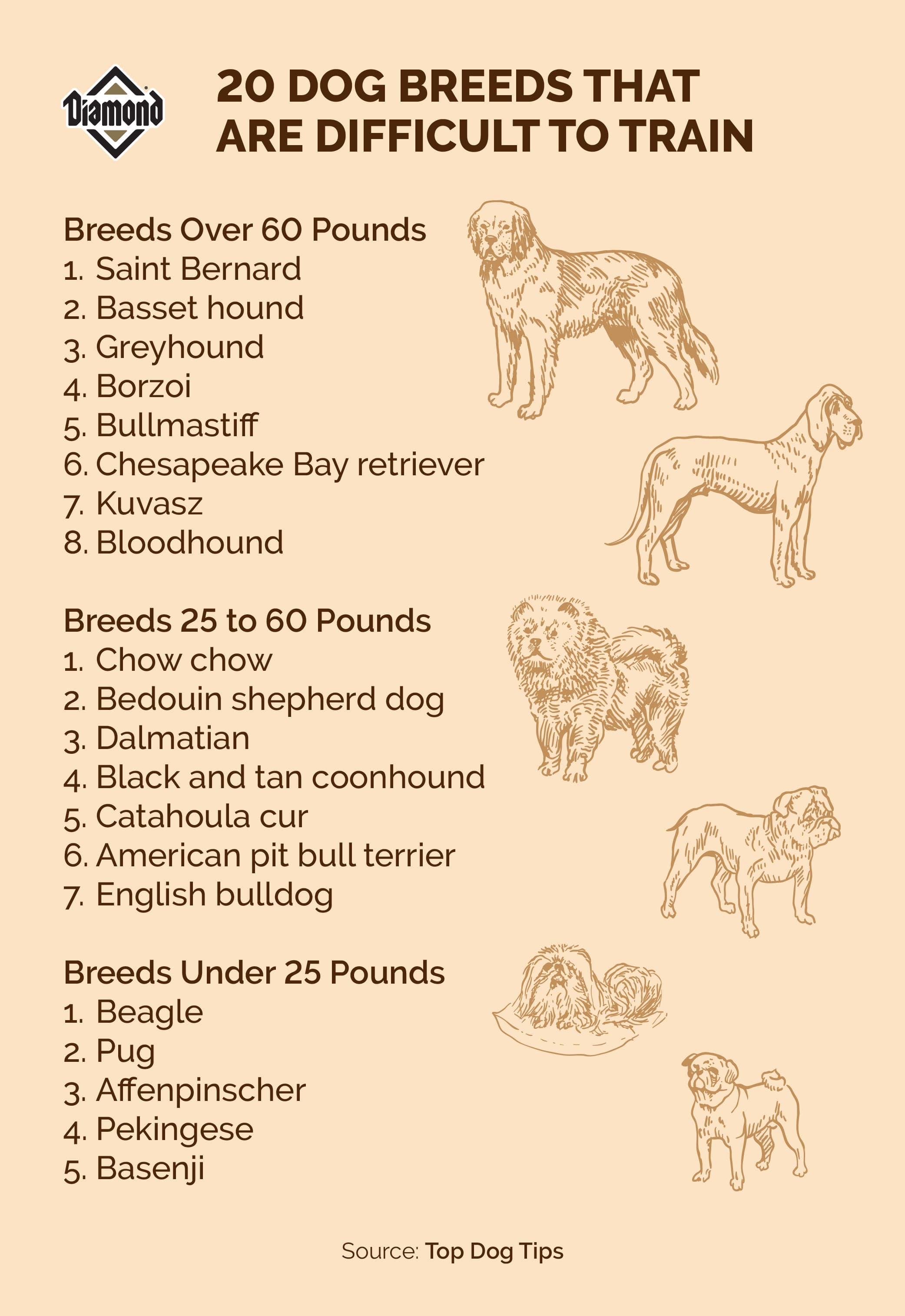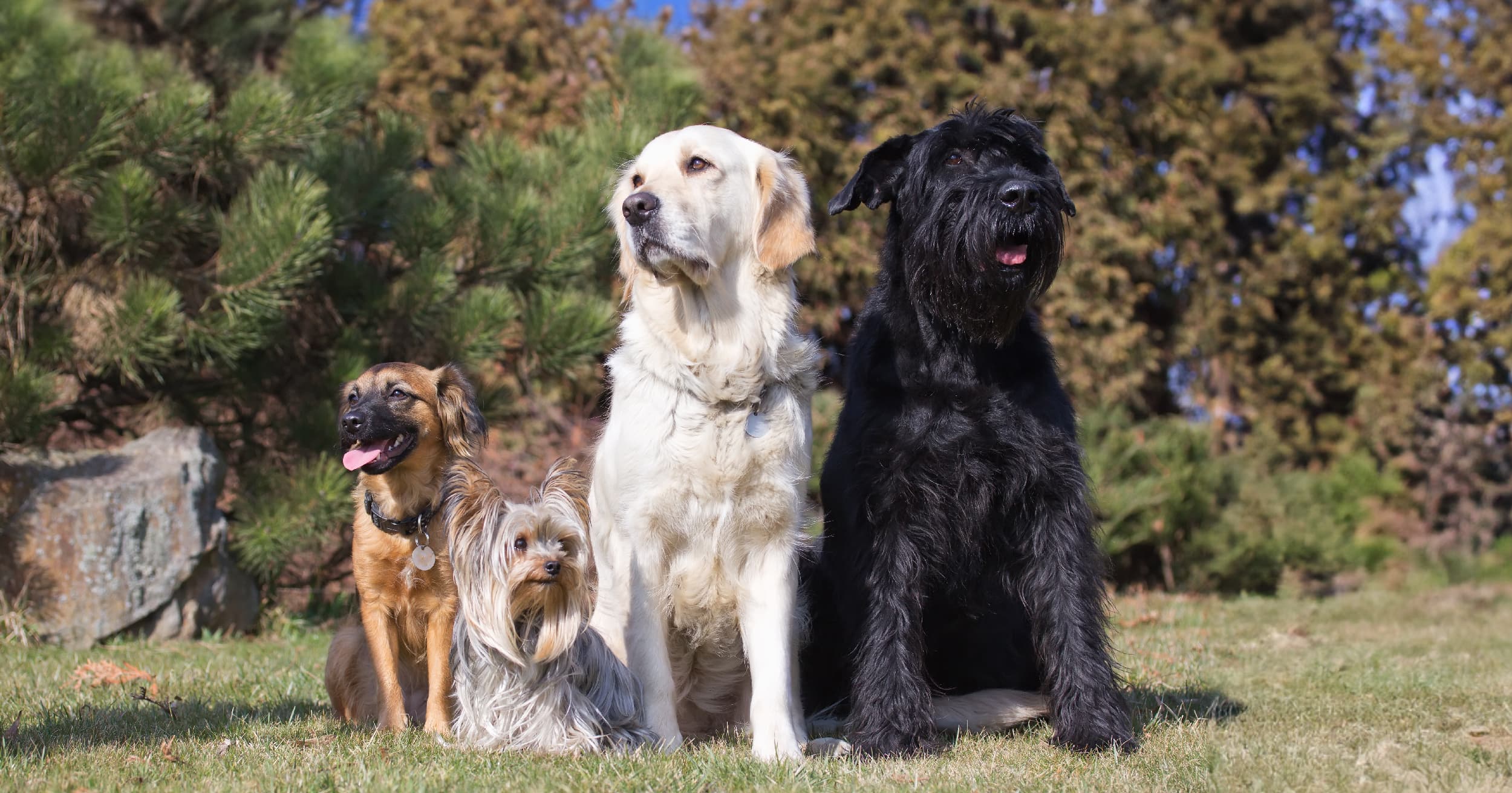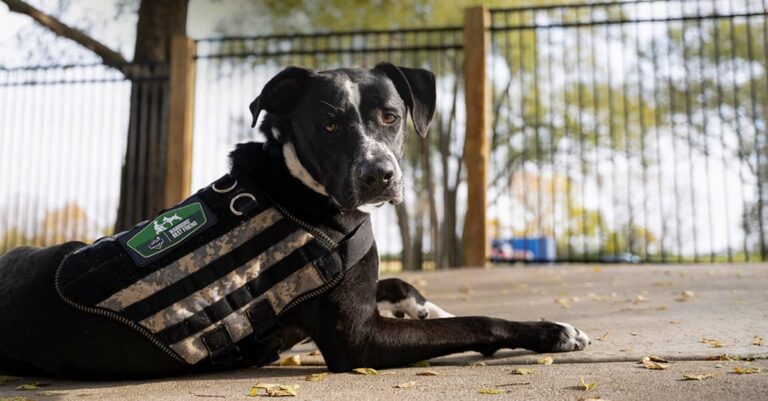Dogs can have us questioning many things about them. Are they really howling at the moon? Are they actually colorblind? Do they have to drool sooo much? That last one’s a common question from Newfoundland pet parents.
So what about breed-related questions? Have you ever wondered if your dog can recognize other dogs of the same breed? Are some dog breeds harder to train than others? Is there any breed that loves cats? We’ve answered these questions in this article as well as whether dogs know that they’re related. We’ll tackle the drooling question another time.
Do Dogs Recognize Their Own Breed?
If you stand a Chihuahua (who weighs less than 6 pounds) next to an English mastiff (who can weigh over 200 pounds), it can be hard to remember that they’re the same species and that they’re both descendants of the grey wolf. They’re both Canis lupus familiaris; they just have very, very, very different physical appearances.
So does a Chihuahua know that the English mastiff is a dog just like them? And can they tell that another Chihuahua is the same breed as them? We don’t know for sure, but it’s likely that dogs know that other dogs are dogs, but they don’t distinguish between breeds. A study we referenced in our blog about whether dogs can video chat and watch TV suggested that when dogs watch videos of other dogs, they can recognize dogs as dogs. Other studies have found that dogs can tell if a dog (or human’s) emotions are positive or negative. Who’s a clever doggy?
Do Dogs Know They’re Related?
Whether dogs can recognize their parents or siblings is still up for debate as well, but the results of one study suggests that they can. The researchers found that at 4–5.5 weeks of age, all pups could recognize each other and their mothers using just their nose. When they were separated between 8–12 weeks of age and reunited approximately two years later, the now-adult dogs recognized their mother and she recognized them. If the pups lived with a sibling, they could recognize a different sibling after two years, but if they lived alone, they couldn’t recognize their siblings. The researchers suggested that the way mother dogs and their pups recognize each other is different to how siblings are recognized.
Which Dog Breeds Are Hard to Train?
There’s a reason that Labrador retrievers are commonly trained as service dogs, but at the same time, not all Labradors graduate. Every dog has their own personality, so just because a breed is usually easy to train, it doesn’t mean that every dog of that breed is an avid student. Similarly, some breeds are known to be more difficult to train, but that doesn’t mean that you shouldn’t try.
Top Dog Tips compiled a list of 20 breeds that are difficult to train according to scientific studies. But they stress that these breeds are not impossible to train — they’re just harder than the others. Additionally, non-breed-related factors such as the dog’s upbringing, environment, history, health and age should be considered as well as the owner’s skills and ability to train dogs.
The breeds ranked as the most difficult to train in each weight category were Saint Bernard, chow chow and beagle. The other difficult-to-train breeds are listed in the graphic below, and you can read about why each breed made the list in Top Dog Tips’ article. It’s interesting that beagles made the number one spot for their weight group. The United States Department of Agriculture (USDA) created the Beagle Brigade for patrolling airports in search of food items that might be carrying diseases or invasive species. So clearly some beagles are very well trained.

Are Some Dog Breeds Better With Cats?
They appear to be each other’s archnemeses, but it is possible for dogs and cats to be friends. If you’re looking for a dog breed that will play nice with your cat, there are some breeds that may be more cat-loving or at least cat-tolerant than others.
According to the American Kennel Club (AKC), some breed groups are more cat-friendly than others. The cat-loving breed groups include the toy group, who are affectionate and sociable, and the sporting group, who will make friends with everyone, even cats.
The breed groups that are unlikely to play nice with Kitty are the terriers (bred to hunt) and the sighthounds (who live for the chase). Many cats will also not appreciate being constantly rounded up by dogs from the herding group.
It can be hard for some dogs to ignore their brain telling them “Must. Chase. Cats.” But with training and socialization, especially as a puppy, your dog’s favorite thing to chase doesn’t have to be your cat.
If you’re looking for a canine companion for your family’s feline, the AKC suggests one of these nine dog breeds who are good with cats.
- Basset hounds
- Beagles
- Bulldogs
- Cavalier King Charles spaniels
- Collies
- Golden retrievers
- Labrador retrievers
- Papillons
- Pugs
You can learn about how to introduce dogs to cats in our article that has eight tips for successfully integrating a rescue dog with other pets. And if you’re reversing the situation, we’ve got some suggestions in this article about how to introduce a new kitten to your dog.
Well we’ve answered some of the questions you may have about dog breeds. Now to get working on the answer for why some breeds drool so much.
RELATED POST: Debarking Pet Myths: Dogs and Cats Hate Each Other







